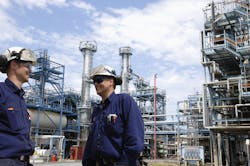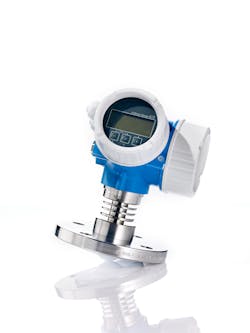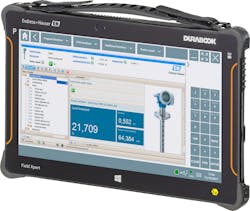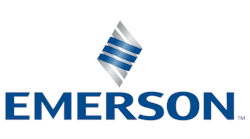Control system engineers and SIS team leads at petrochemical companies each have a responsibility to ensure efficiency, safety and accuracy in processes. Although they each have different roles, both groups are affected when a challenge or issue emerges.
Recently, a large petrochemical manufacturer had an issue with its radar level instruments not properly communicating with its control system. From a control system perspective, this was a concern because these communications are key to the process. From a safety and field maintenance perspective, it was critical to find a solution because this communication issue could result in excessive labor expense and the possible tank overfills.
Endress+Hauser’s Micropilot FMR51 was installed on two of the petrochemical manufacturer’s tanks, and both level instruments were easily configured and commissioned remotely. The instruments are now communicating with the control system properly. All challenges have been addressed, and there are no longer concerns from either perspective.
The challenge
The petrochemical manufacturer has many tanks filled with various liquids at its facility, and it uses radar level instruments to measure the media and liquids inside the tanks. The company started to experience challenges using its previously installed radar technology on its water-cooling tank and its sump tank. The radar level instruments were not communicating properly to the control system, resulting in more than 1,000 false alarms and firmware update alerts per day. These excessive alarms and alerts were overwhelming the control system and hindering operators’ efforts to view and act upon real alarms in a timely manner.
These excessive alarms left operators with the difficult choice to manage every alarm each day — manually turn these alarms off or hide them in the background so the control system would not display them. They decided to turn the alarms off, but to ensure safety, it was necessary to then take measurements manually.
When the alarms were turned off, plant personnel lost visibility of the levels in the tanks and risked the potential of an overfill. This forced operators to go out to each tank daily to take a measurement at the level instruments.
Depending on the measurement readings, the team lead would need to drain the tank and then check the radar reading to see if any levels or obstructions were detected. If a negative reading resulted, plant personnel would use a handheld communicator to map out the tanks and find the obstructions or reasons why the radar measurement signaled a level with the tank drained. Draining the tank was time-consuming, and the handheld communicator did not work well for tank mapping.
They needed an easier and more efficient way to manage the level of their tanks.
The petrochemical company contacted Endress+Hauser’s sales and service partner, Vector Controls and Automation Group, to explain its challenges. The Vector team recommended the Micropilot FMR51 radar level instrument for the application.
The team explained that Endress+Hauser puts all instruments through live tests to ensure compatibility with DCS/PLC platforms and showed how this is important for seamless communications, in this case, via Foundation Fieldbus.
The FMR51 was shipped and installed. A representative from Vector Controls demonstrated the easy mapping, configuration and setup accomplished by using Endress+Hauser’s Field Xpert SMT70, a tablet PC platform with a full screen display.
The Vector representative also walked plant personnel through a step-by-step setup wizard to commission and configure the radar — a simple and straightforward procedure.
Results
The communication challenges from the instruments to the control system have been resolved since installing the FMR51. This upgrade eliminated time-consuming manual measurements and tank mapping, reduced the risk of overfills and ensured plant safety.
When it was necessary to map out the tanks, there was no longer a need for the small handheld communicator. Using the SMT70 and the control system for mapping saved between one and four hours depending on the level instruments, their location and the application. This was particularly important due to the location of the level instrument, which required man lifts for access.
Upgrading the level instrumentation thus solved a number of problems, while providing lower maintenance costs and improved operations.




